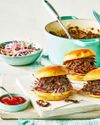
The word keto comes from the term ketosis; a metabolic state where the body produces molecules called ketone bodies used for fuel instead of glucose. The scientific term is actually ketogenesis, which translates into generates ketones.
The body does this by using fat as the main energy source instead of carbs, essentially by converting fat into these ketone molecules. When we talk about fat, we’re talking about two things. First, dietary fat (i.e. any fat that you consume in the diet). And second, we’re talking about fat stored on your body in the form of what’s technically referred to as adipose tissue, which is just a fancy term for body fat.
The keto diet, therefore, is one which encourages the body to switch its main fuel source from glucose to ketones through the process of ketogenesis. The best way to think about ketosis is that it’s a secondary backup energy system that evolved over time to allow humans to survive and thrive during times of food scarcity. There are a number of ways to encourage the body to switch to ketosis. The most direct way is through fasting as, over time, the body will burn off any excess glucose and will need to generate the energy it needs from body fat. However, what has become popular over recent years is what’s called nutritional ketosis. This is where we drive ketosis through making changes to the diet; specifically, by keeping carbs incredibly low.
THE BENEFITS
This story is from the June/July 2021 edition of BBC Good Food ME.
Start your 7-day Magzter GOLD free trial to access thousands of curated premium stories, and 8,500+ magazines and newspapers.
Already a subscriber ? Sign In
This story is from the June/July 2021 edition of BBC Good Food ME.
Start your 7-day Magzter GOLD free trial to access thousands of curated premium stories, and 8,500+ magazines and newspapers.
Already a subscriber? Sign In

Kung Pao & Beyond by Susan Jung
Editor Keith Kendrick indulges his love of fried chicken with this celebration of the whole bird

Tried & tasted
Our top dining experiences this month

Make the most of your gadgets
Embrace energy-efficient cooking with these money-saving

CHOCOLATE PIZZA
Make this a fun baking project with the kids

5 healthy ideas yogurt
Boost your gut health with our simple snacks, breakfasts and lunches

a touch of spice
Make a change from rice with quick-cooking bulgur wheat and chickpeas – the result is a gently spiced vegetarian supper, full of flavour and textures

THE SUITE LIFE
Pack your bags and head to Qatar for a luxurious weekend escapade at Waldorf Astoria Lusail Doha

MELISSA THOMPSON'S FIRE FEAST
Welcome warmer days with this fresh menu for the barbecue

PULLED BEEF
Tom's one-pan beef recipe is a simple way to master slow-cooking meat

free-from & fabulous
Quick, everyday recipes that omit dairy, eggs and nuts